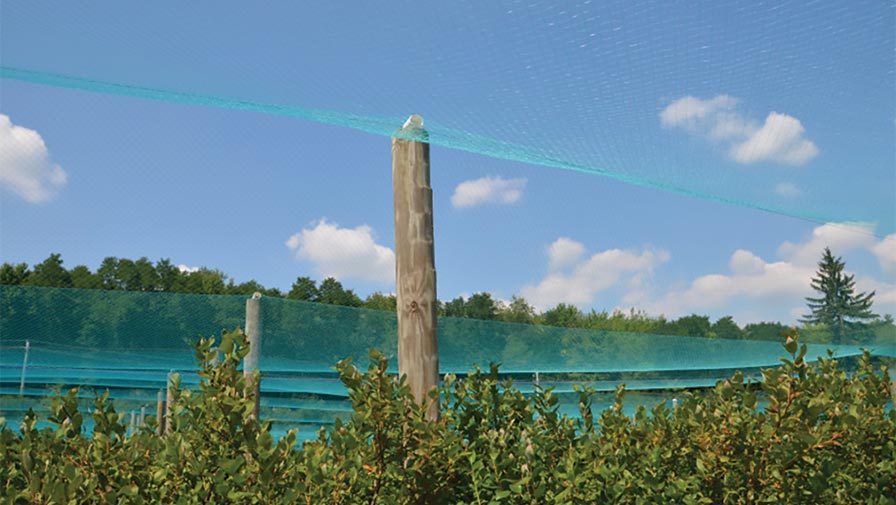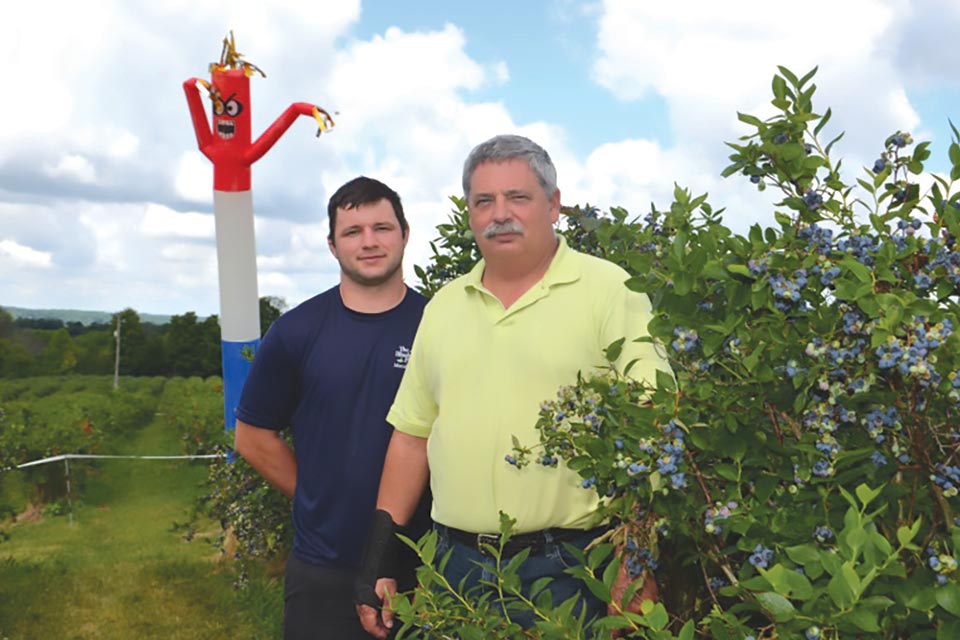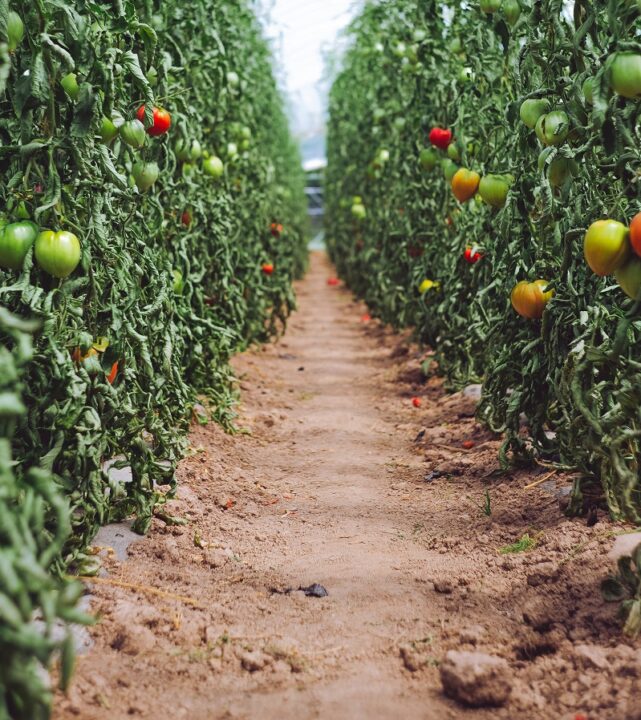Bird Damage Plagues Most Fruit Growers

This grower uses overhead bird netting system to protect the fruit at a blueberry farm in northeast Ohio. (Photo credits: Gary Gao, The Ohio State University)
Fruit loss to bird depredation can be a serious challenge to fruit growers whether they grow 1 acre or 1,000 acres. A recent comprehensive survey showed that bird damage to five fruit crops including ‘Honeycrisp’ apples, winegrapes, blueberries, and sweet and tart cherries in five U.S. states including California, Michigan, New York, Oregon, and Washington was estimated at $189 million. After many years of trials and tribulations by commercial companies, growers, and researchers, we are still searching for the truly cost effective method of bird damage control in fruit plantings.
Overhead bird netting, though quite costly and difficult to install, is still a better method in preventing fruit loss to hungry birds. Quite a few berry growers who I work with in Ohio have adopted this method. The overhead bird netting looks like a huge bird cage over the entire fruit planting. There are a few companies that carry bird netting systems. One of them is the Crop Protection Netting by Smart Net Systems.
Bird netting may be expensive to install, but many fruit growers found it an essential part of their fruit production. I have seen Ohio growers who covered as little as half an acre and as big as 10 acres. I was told that a blueberry grower in Canada covered 20 acres of blueberries with bird netting. Many different noise-making devices, such as cannons and radios, have been used for years to scare birds away with limited success.
Growers found out that birds quickly get used to these devices. When I was visiting a blueberry farm in Ohio, I found one robin sitting right on a cannon, enjoying the view of that beautiful blueberry farm. The loud noise from the cannon scared the daylights out of me and other pickers, but did not seem to bother that bird at all!
Another idea, according to professor Marvin Pritts of Cornell University, is “an electronic device (Bird-Gard) that emits digitized, species-specific bird distress calls. The device can be programmed for certain species, and the calls occur at random intervals to reduce the risk of habituation. It is very difficult for birds to habituate to their own distress calls, so this device can be very effective.”
Still, another possible choice is air dancers. Growers have tried this option with mixed results. Steve Beilstein of The Blueberry Patch in Lexington, OH, likes the approach so far.

Andrew (left) and Steve Beilstein use an air dancer, pictured in the background, as a bird-scaring device at The Blueberry Patch in Lexington, OH. (Photo credit: Gary Gao)
“I attended a presentation on bird damage control at a conference. Air dancer was mentioned as one of the possible options. I bought three of them,” Beilstein said.
He said he has had some success with this approach. He also uses it as a marker to direct his customers. Well, killing two birds with one stone.
Other visual devices, such as fake owls, hawk kites, Mylar tape, scare-eye balloons, and lights may also work somewhat for a limited time. But birds will eventually acclimate to them.
Many fruit growers are looking for that one magic spray that will take care of the problem. Unfortunately, there are few chemical repellents that are available to fruit growers. Quite a bit of research has been done with methyl anthranilate as a chemical repellent. Methyl anthranilate is commercially used as a grape flavor additive in the food industry. There are methyl anthranilate formulations available to blueberry and strawberry growers. I was told that this chemical is supposed to irritate birds by affecting their pain center.
Growers have had varied success with it. Some growers like it a lot while others do not think much of it. I have not done any controlled studies myself. My limited observation has been that the effect of the sprays typically lasts several days. The whole field smells “grapey.” Well, you take that for what is worth.
Falcons have been used as a bird deterrent on the West Coast with excellent results. Growers with a planting of 50 acres or more may find this approach cost-effective. I have seen these trained falcons at trade shows. They are amazing creatures. Unfortunately, they don’t pencil out for small fruit plantings.
Despite many years of research, there isn’t one legal chemical spray that solves bird problems for fruit growers. Growers will have to try a combination of many different approaches to prevent bird damage. What works for one year may not work in another year.
Netting is highly effective, provided that the netting is very tight and is put up before birds arrive. If netting is too cost prohibitive, a combination of other measures will need to be tried until an effective method is found for your farm.










